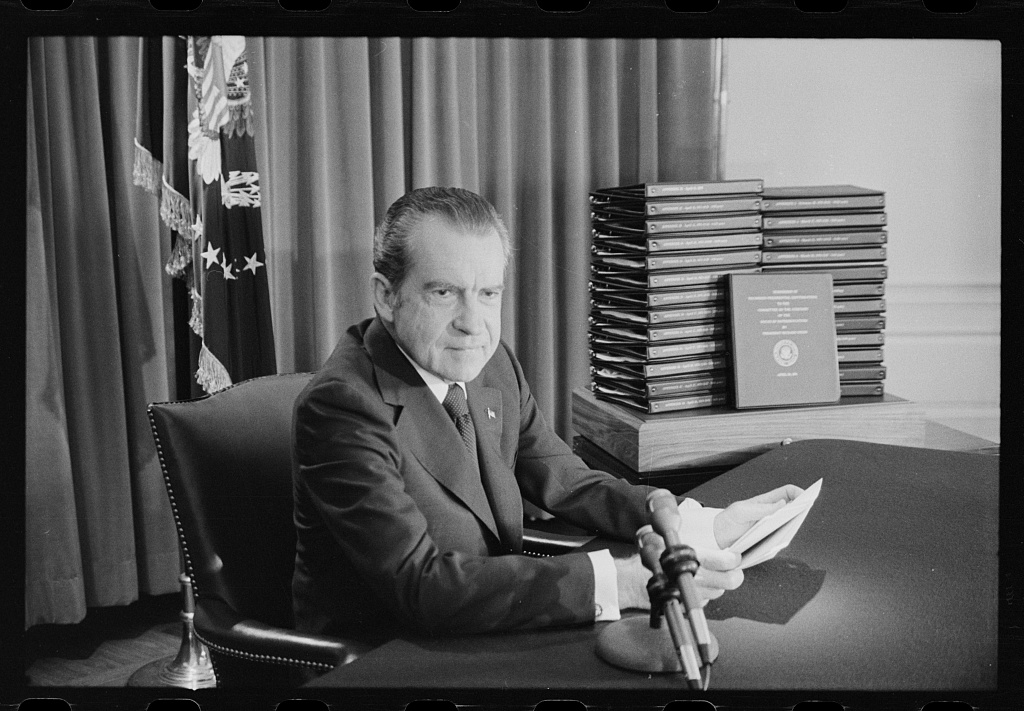Nixon Resignation: President Richard M. Nixon Resigns

Born into a poor family in Southern California, Richard Nixon would go on to graduate from Duke University School of Law, followed by a succession of political offices, including a congressman and later Senator from California, followed by eight years as Vice President under President Dwight D. Eisenhower.
Elected into office as the 37th President in 1969, Nixon’s five-year presidency saw the conclusion of US involvement in the Vietnam War, detente with the Soviet Union and China, and the establishment of the Environmental Protection Agency, as well as presiding over the Apollo 11 moon landing.
Watergate Scandal
During his second term in office, Nixon’s presidency would disintegrate under the Watergate Scandal, which stemmed from the Nixon administration’s repeated attempts to cover up its involvement in the failed break-in of the Democratic National Committee headquarters at the Watergate office complex in Washington DC.
After the five break-in perpetrators were arrested, two reporters from the Washington Post and the U.S. Justice Department connected the cash found on the men at the time of the break-in to Nixon’s re-election campaign committee, a clear violation of campaign funding laws.
During his resultant impeachment hearings in the House of Representatives, the US Supreme Court ruled that Nixon was mandated to release his Oval Office tapes to government investigators, which would later reveal Nixon’s direct attempts to cover up activities that took place after the Watergate break-in, while attempting to use federal officials to derail the investigation against him.
On August 9th, 1974, in the face of almost certain impeachment and removal from office, Richard Nixon became the only sitting president to resign from office.
